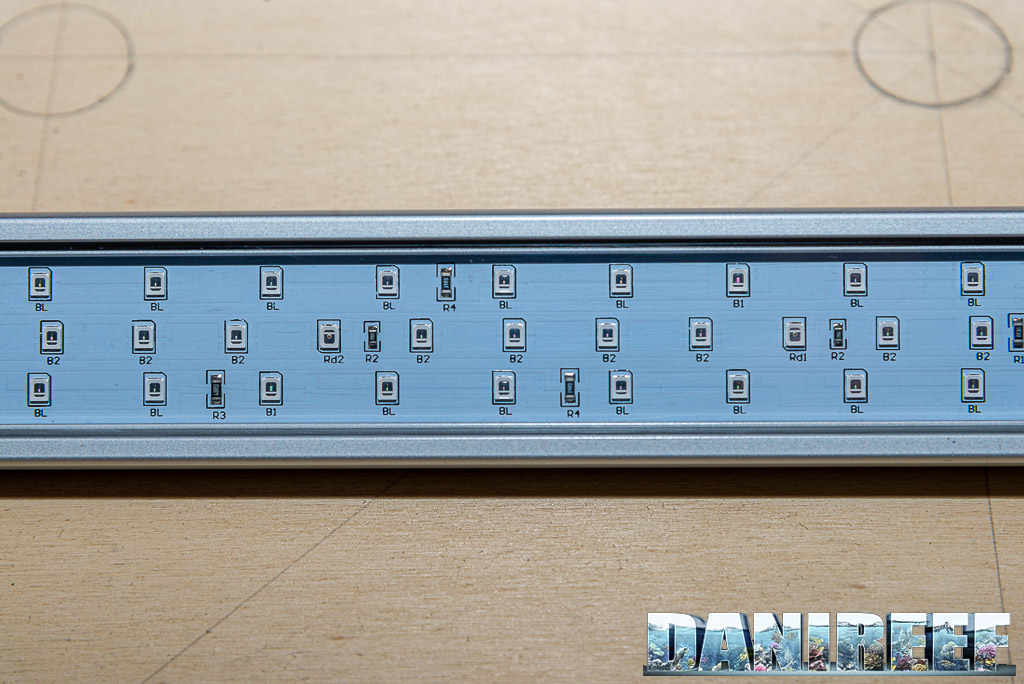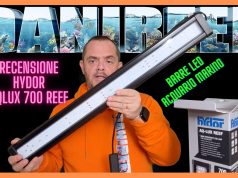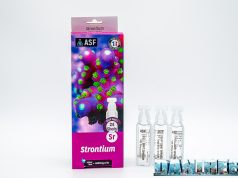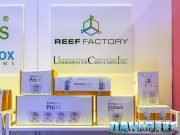Our new DaniReef LAB working method for PAR measurement
During the long nights spent on our forum (here) we always wondered how could we compare PAR from different ceiling lights. Even though we had the perfect device, the Quantum Meter MQ-510 di Apogee, we always referred only to the value measured at the centre at 20 cm of distance, more or less.
IThe Quantum Meter MQ-510 measures the PAR, expressed in PFFD that is photosynthetic photon flux density in μmol m-2 s-1. This device is calibrated to work underwater, so if it’s in air the measured value has to be divided by 1,32 that’s the dive factor. We have to do the conversion. The values you’re going to see are correct.

We decided to make a square base of 70×70 cm, we set 17 fiducial points where we placed the sensor Quantum Meter MQ-510 and we also made 3 lifts of 20, 40 and 60 cm for the ceiling light, in order to have the same distance from the sensor. This will allow us to create the curves which can be compared to other ceiling lights’s, all tested at the same distances. Notice that this distance is measured between the base of the sensor and the ceiling light. In reality it should be decreased of 3,5 cm that is the height of the measurement cylinder and increased by 0,5 cm that’s the dimension of the spacers that lift the ceiling light.

So the three measurements are made from 17, 37 and 57 cm of distance. Because they’ve been done in air, they will be corrected.
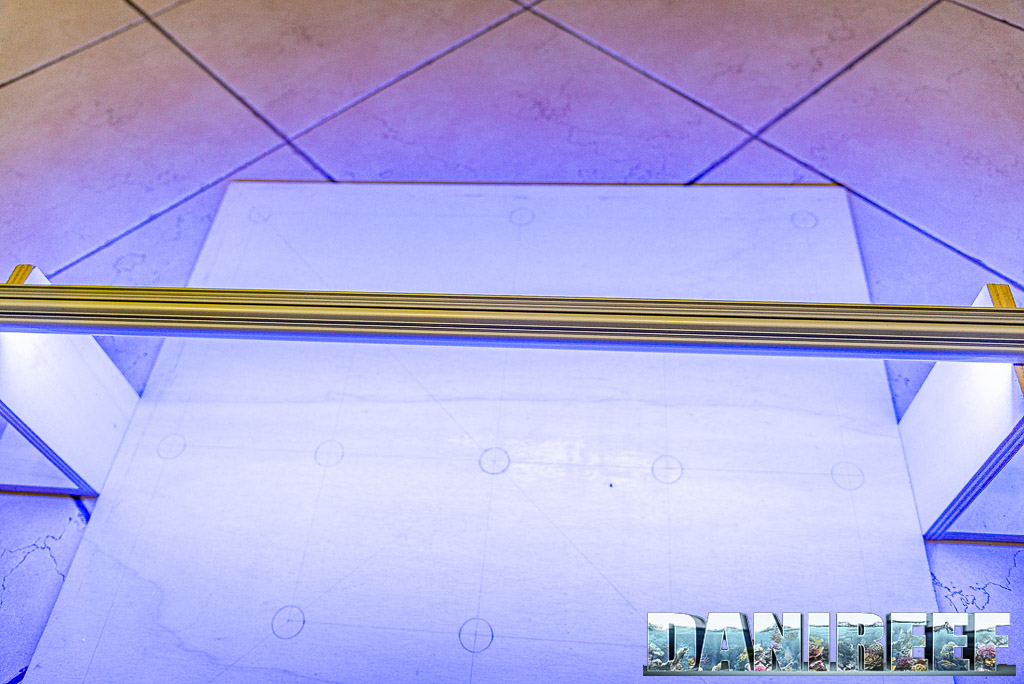
Here above you can see our base with the spacers that keep the LED bar raised by 17 cm between the base and the lamp itself, so that we’ll have the same value for every ceiling light we’ll test and the comparisons will be easier.
PAR measurement from 17 cm of distance
These are the collected values:
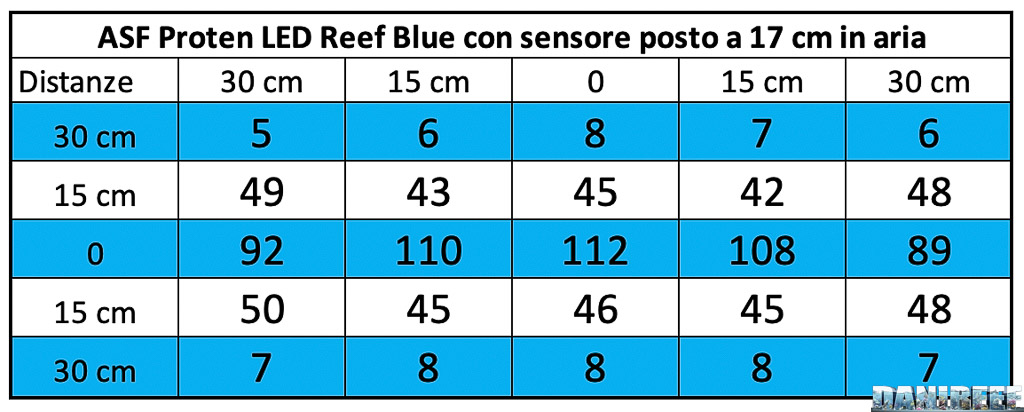
And this is the corresponding chart. We are using the same scale for lights of the same class. In this case, speaking of bars, we lowered the maximum scale. For the bars we’ll test in the future, you’ll find the same evaluation scale.
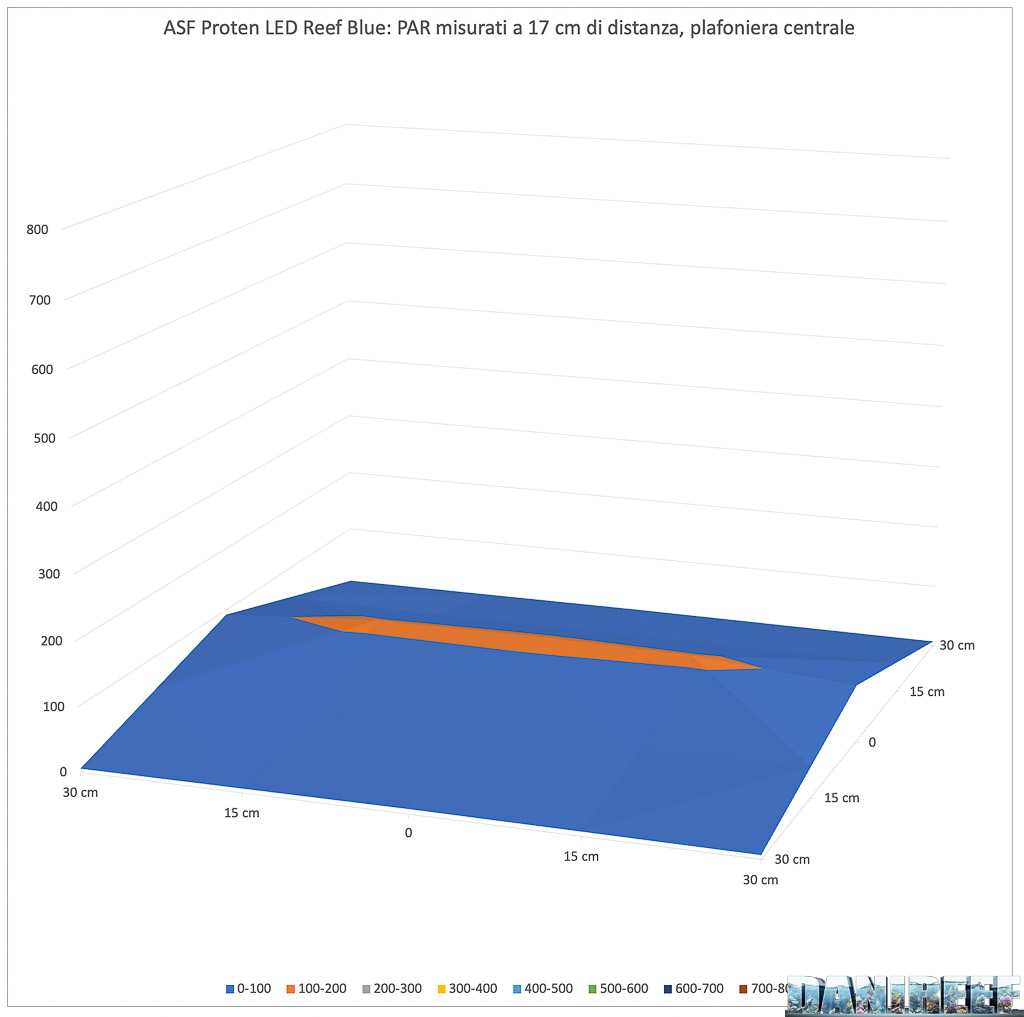
As you can see the bar creates a curve similar to a tent and obtains a perfect uniformity between the value at the middle on the sides. Differently from classic lamps the decrease is very linear, at 20 cm from the light source. Notice that on the sides the light slightly decreases: that’s normal because it doesn’t have the reinforcement of the central light.
PAR measurement from 37 cm of distance
Here the collected values:
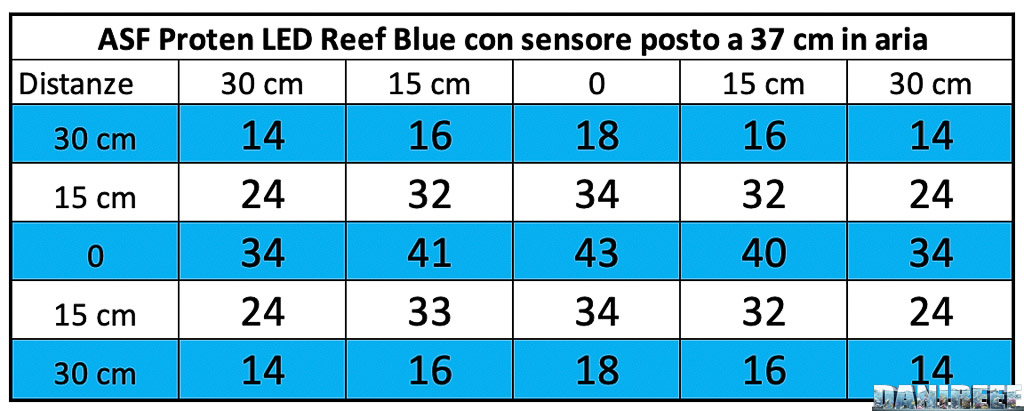
And this is the corresponding graph.
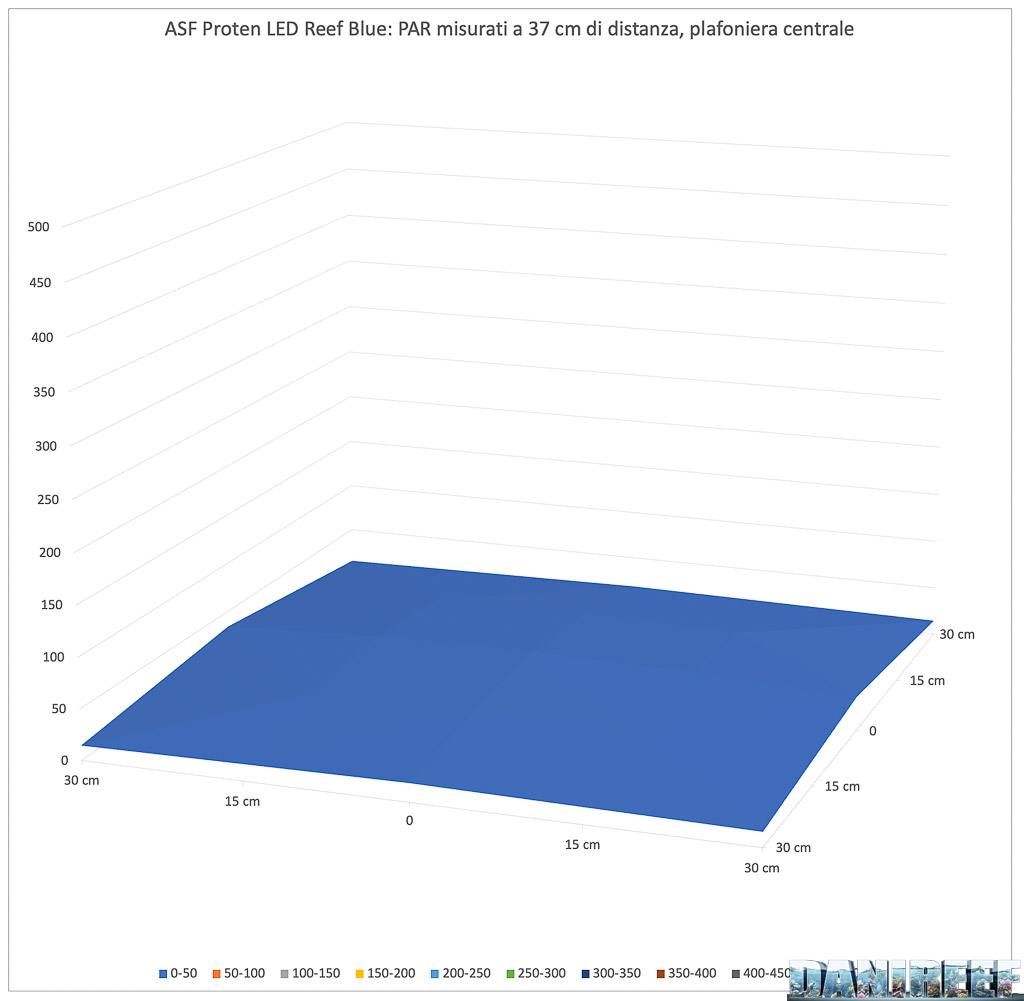
With a bigger space between ceiling light and sensor, the difference between PAR at the middle and on the sides decreases. The light spreads a lot, but the value at the middle decreases from 112 to 43 μmol m-2 s-1, measured in the brightest points.
PAR measurement from 57 cm of distance
These are the collected values:
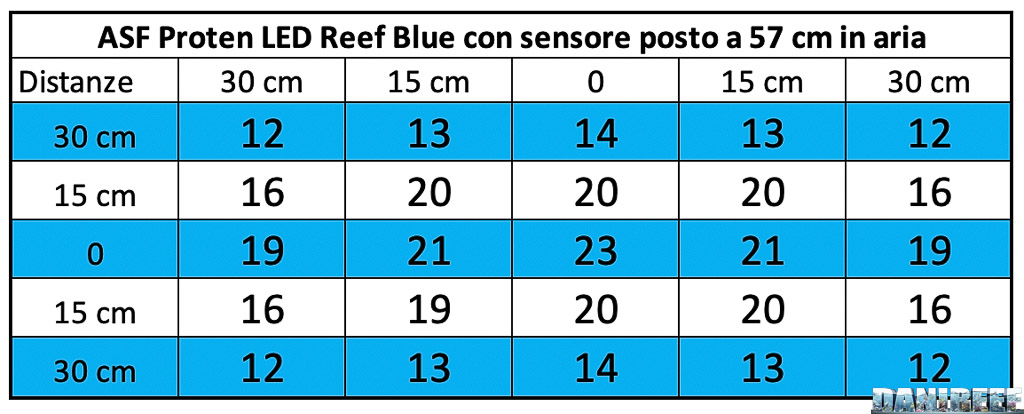
And this is the corresponding chart:
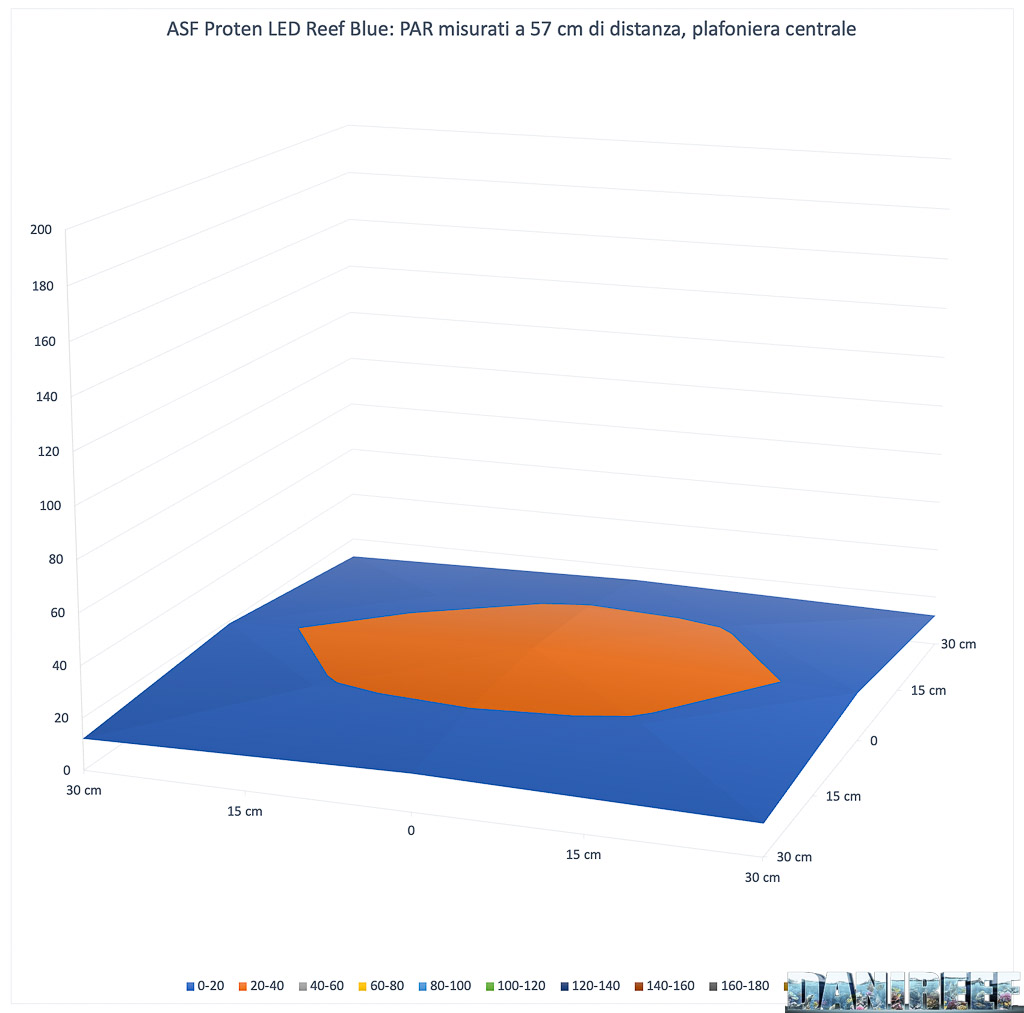
Increasing even more the space between ceiling light and sensor also increases the uniformity among the collected values. The uniformity is practically perfect. The value at the middle decreases again from 112, to 43, to 23 μmol m-2 s-1.
The PAR in the middle in the different configurations
Let’s continue with our technical measurements. We can see how, in a chart, the PAR collected in the middle decrease in the three different distances of our tests.
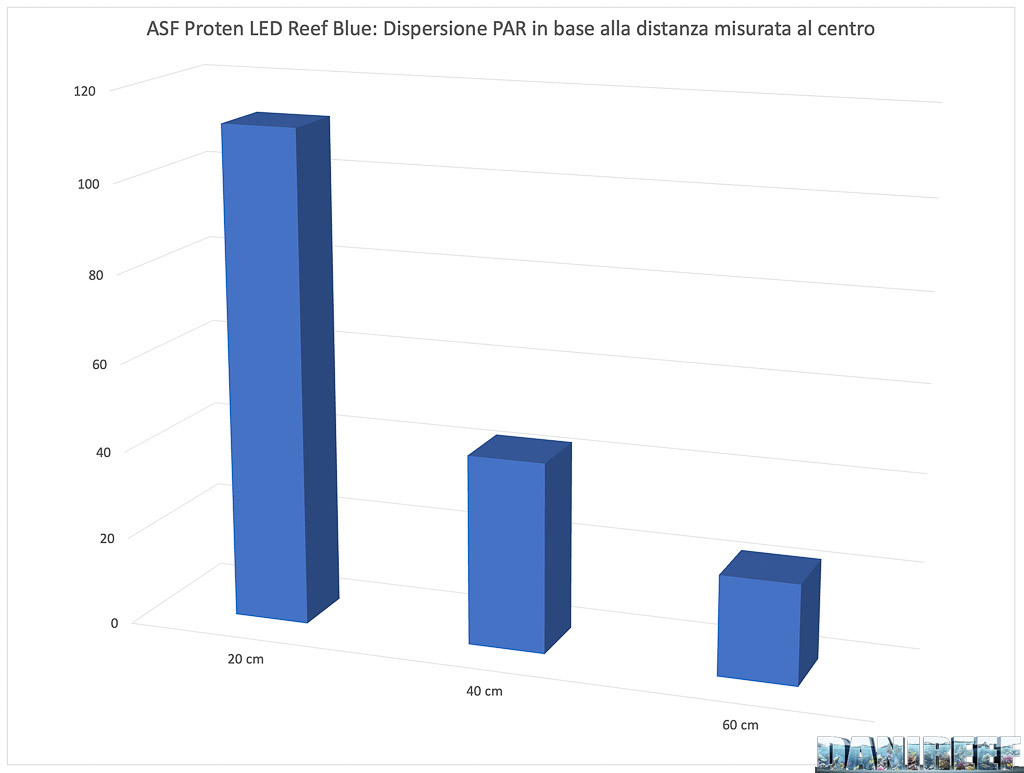
Energy variation of the Reef Flare Pro L Blue depending on the distances
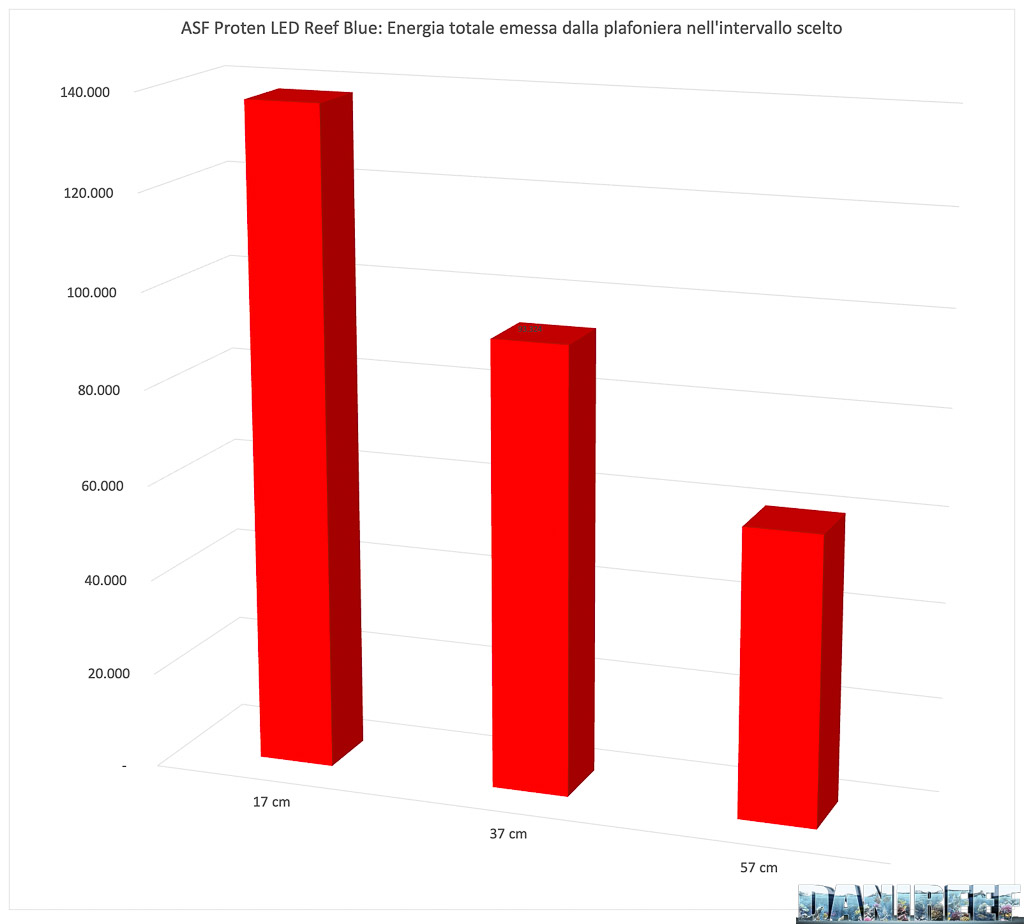
This is the most significant and most comparable data: the energy variation. We calculated the volumes of the three surfaces previously seen. It’s obvious that moving away from the ceiling light the PAR decrease, also because the light illuminates a wider space. In this way you can consider all the light energy contained in the 60×60 cm area subtended by the ceiling light. And the three values of 138.000, 93.000 and 60.000 assume a different connotation compared to the values in the middle. When the first ones decrease because of the increasing of the distances, the subtended area, that is the energy, decreases slowly.
Let’s continue on page three with the costs, the comparison with other ceiling lights on the market and our final comment.






